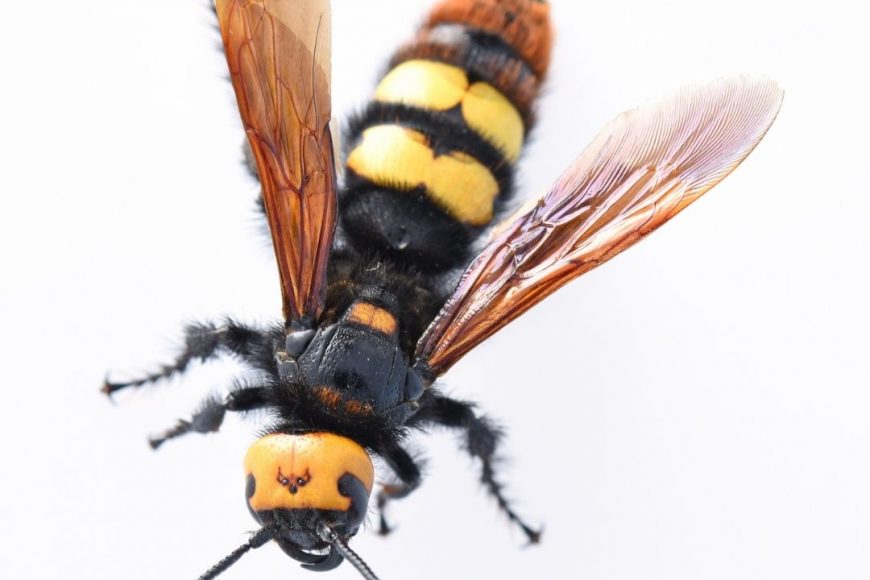- By Caleb
- In RESIDENTIAL
- Tags Wasp Control, Wasp Control Company, Wasps
Fill out the form below and a Cypress Creek representative will be in touch with you about your pest control needs.

Wasps are a quintessential part of the ecosystem and are more than just buzzing insects you encounter on a warm Houston day. While they might cause a pause for anyone worried about a sting, wasps play a crucial role in pest control and pollination. For residents of the Greater Houston Area, understanding these fascinating and diverse species can help you appreciate their role in nature and know what to do when you encounter them.
This guide dives into the wasp species commonly found in Houston, highlighting their behaviors, benefits, and how to safely coexist with them.
Contrary to their reputation, wasps do much more than just build intimidating nests or buzz around picnics. They play vital roles in maintaining the balance of ecosystems:
However, knowing which species you’re dealing with is key to managing their presence without unnecessary harm to their colonies or your peace of mind.
Houston’s warm and humid climate provides the perfect environment for several wasp species to thrive. Here’s a closer look at the most common types you might encounter:
Appearance
Paper wasps have slender bodies, long legs, and ranges in colors from brown with yellow markings to reddish tones.
Behavior
These social wasps are often seen building umbrella-shaped nests under eaves, tree branches, or sheltered areas. Paper wasps are generally non-aggressive unless their nest is disturbed.
Role
Paper wasps are excellent at controlling garden pests, making them allies to Houston gardeners.
Pro tip
If you spot a nest near your home, consider relocating it with the help of a professional, rather than removing it entirely. It allows you to benefit from their pest-control abilities without compromising safety.
Appearance
Yellow jackets are smaller than paper wasps and are easily recognizable by their bright yellow and black markings.
Behavior
Known for their aggression, yellow jackets can defend their nests fiercely if they feel threatened. Their nests are commonly found in underground burrows, tree stumps, or attached to structures.
Role
Yellow jackets are highly effective hunters and feed on a variety of insects, supporting pest control efforts.
Pro tip
If you encounter yellow jackets in your yard, observe them from a safe distance and avoid sudden movements. Always contact professionals for nest removal if needed since their stings can pack a punch.
Appearance
Mud daubers are solitary wasps with slender, thread-like waists. They’re often dark, metallic black or blue in color.
Behavior
Unlike social wasps, mud daubers rarely sting and are non-aggressive. They build unique, tube-like nests made of mud, often under bridges, overhangs, or sheltered outdoor surfaces.
Role
Mud daubers target and paralyze spiders to provide food for their larvae, making them helpful in reducing spider populations.
Fun fact
The intricate mud structures they construct are fascinating examples of insect architecture. Take a moment to admire these natural sculptures if you see one.
Appearance
These are some of the largest wasps in Houston, with shiny black bodies and yellow markings. They may appear intimidating due to their size but are typically docile.
Behavior
Cicada killers are solitary wasps that nest in sandy or loose soils. True to their name, they hunt and paralyze cicadas to provide for their young.
Role
While not significant pollinators, these wasps help control cicada populations, which can damage trees in large numbers.
Pro tip
Although they appear menacing, cicada killers rarely interact with humans unless provoked. Simply enjoy watching these giants work from afar.
Appearance
Hornets are larger than yellow jackets with black-and-white markings. Baldfaced hornets are a common variety in the Houston area.
Behavior
These social wasps build large, football-shaped paper nests in tree branches or shrubs. They are highly defensive when their nests are disturbed.
Role
Hornets are valuable predators, helping manage a range of unwanted insects.
Pro tip
If a baldfaced hornet nest is near high-traffic areas, enlist a professional to remove it safely.
Wasps can be intimidating, but they are important allies in maintaining ecological balance. Here are some tips for coexisting peacefully with these beneficial insects:
Coexisting with wasps is a step toward supporting greater biodiversity and a healthier environment. By understanding their behaviors, you can appreciate their role in the ecosystem while keeping your personal space safe and comfortable.
Educate friends and family about the benefits of wasps, and remember that most species are not inherently aggressive. A little knowledge goes a long way in changing the narrative around these vital insects.
Living in the Greater Houston Area means sharing our space with an incredible variety of wildlife, including wasps. By recognizing the unique roles these insects play in pest control, pollination, and the food chain, we can coexist safely and even benefit from their presence.
If you’re curious about identifying specific species or dealing with tricky nests, consider consulting with local pest control experts or entomologists for guidance.
Take a closer look at the wasps in your yard (from a safe distance, of course), and you might just gain a newfound appreciation for these fascinating creatures.